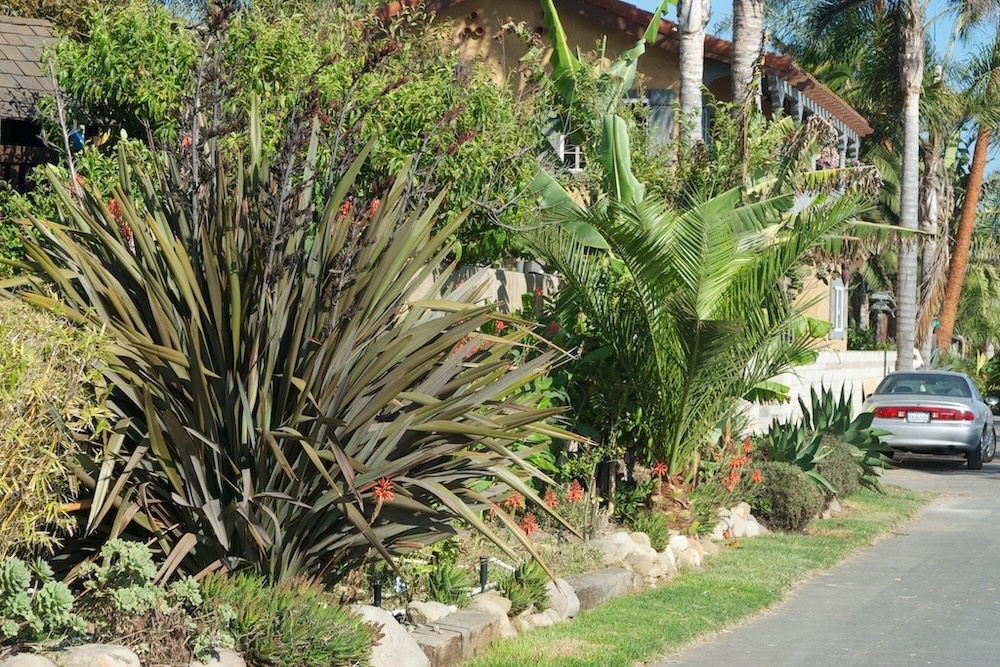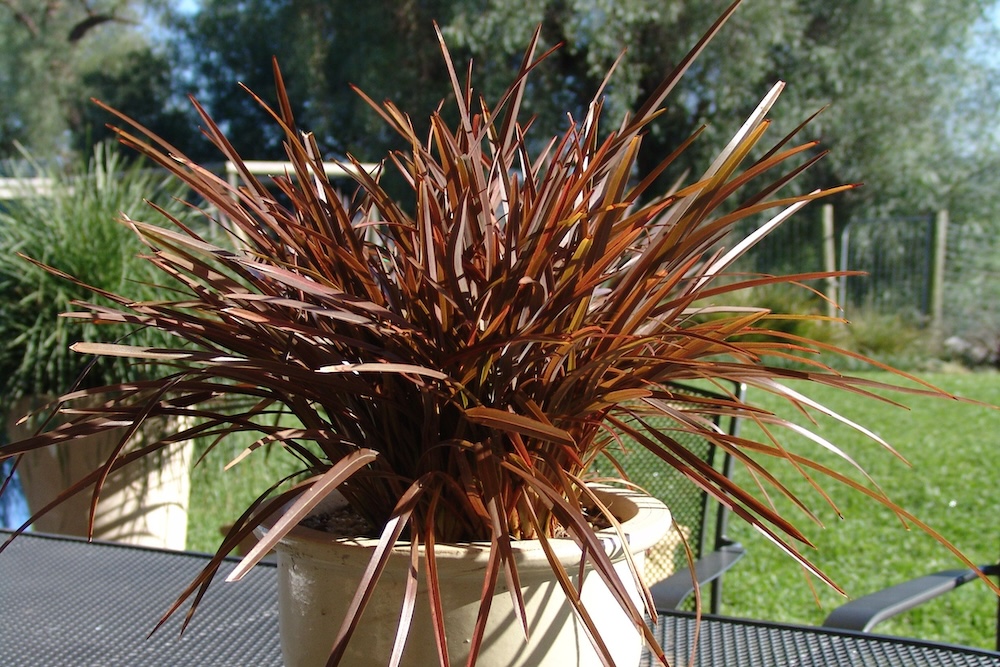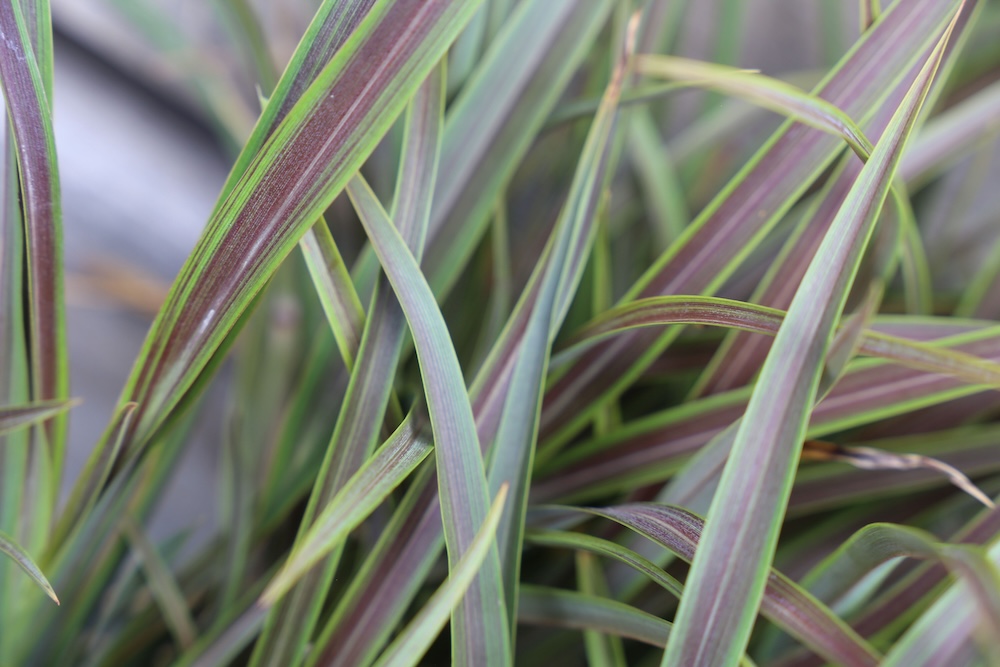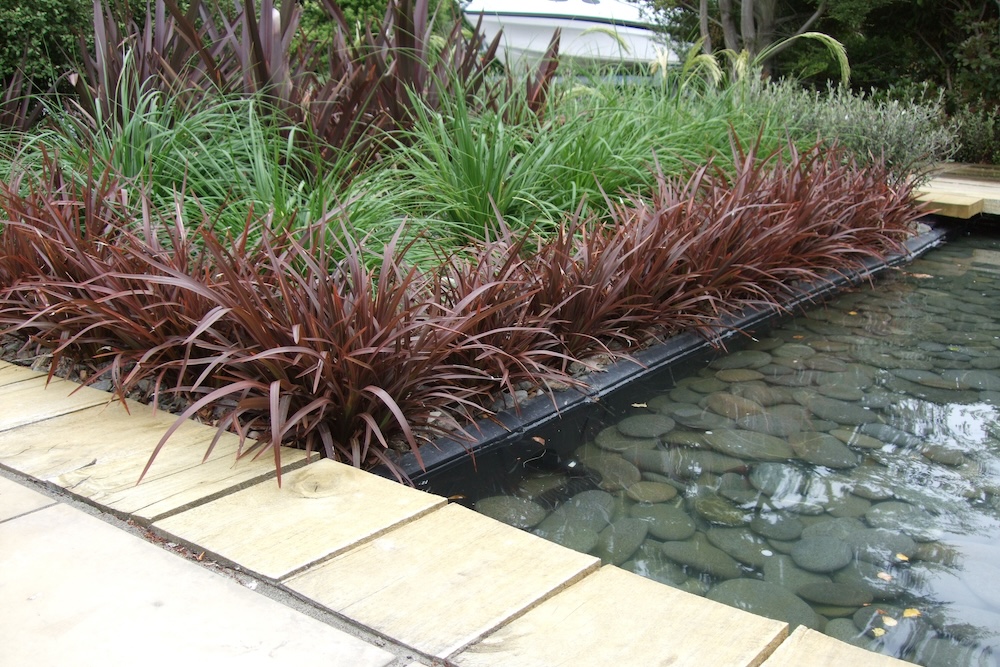Did you know that some of the plants we always thought were native to Australia are actually from Southern Africa?
Phormium: Landscaping with NZ Flax
Want to create a dramatic visual impact in your garden? Could Phormium, also known as NZ Flax, be the answer? It’s a distinctive and adaptable plant that hails from the beautiful landscapes of New Zealand which is at home in any Australian garden.
This strappy plant comes in an array of vibrant colours and sizes with a common architectural form, and is an excellent choice for both experienced home gardeners and professional landscapers. In this article, we’ll delve into the world of Phormium, exploring its features, its ecological role, and a few awesome companion plants.

Understanding Phormium, the New Zealand Flax
The Phormium genus belongs to the Asphodelaceae family. It’s renowned for its dramatic, sword-like leaves and towering flower spikes, which can reach heights of up to 4 metres. There are several species, each with its unique characteristics. The advice contained in this article generally applies across the genus.
Role within Ecosystems
Phormium serves as a food source and habitat for a variety of native wildlife. Just because it originates from NZ, it doesn’t mean our native wildlife don’t appreciate it. In fact, many creatures, from insects to birds, find it an attractive source of sustenance and shelter.
Despite being wind-pollinated, Phormium flowers are frequented by insects and birds. Its fibrous root system is excellent for controlling erosion, especially along river banks in its native ecosystem, and its presence can foster an environment where other, fussier plants can thrive.
Cultivation and Care for Phormium
Ideal Growing Conditions
Phormiums tend to thrive best in well-drained soil, full sun to partial shade, and can tolerate a broad range of temperatures. They’re hardy plants, capable of withstanding coastal conditions and heavy winds, making them a versatile choice for various landscapes. Plant them directly in the ground, or keep them in outdoor pots as a focal point in the garden.

Planting and Care Tips
To plant Phormium, choose a location that meets its sunlight requirements and has ample space for growth. Dig a hole as deep and twice as wide as the root ball, place it into the hole, back fill, and water. Make sure leaves are in the air and roots are in the ground. Keep the soil moist but not waterlogged, and apply a slow-release fertiliser in spring to boost its growth.
Division Tips
Phormium can be propagated by division, ideally in late winter or early spring. However, remember that plants with Plant Breeders’ Rights (PBR) can’t be resold and should only be propagated for personal use.
This ensures the rights of breeders are respected while you enjoy the beauty of Phormium in your garden. It’s not easy breeding plants you know. Without this copyright system we wouldn’t be able to support the hard work and serious financial investment breeders put into making superior cultivated varieties that naturally push the boundaries of what plants are capable of.
Common Pests and Diseases
Phormium is a relatively hardy plant, however, it can occasionally be affected by a few common pests and diseases. Here are some of the most common issues you may encounter and how to treat them:
- Mealybugs: These tiny, white, cotton-like pests can cluster on the undersides of leaves, sucking sap and weakening the plant. They can be managed by introducing beneficial insects like hoverflies and ladybirds or using white oil.
- Aphids: These small, green insects can cause leaf curling and distortions. They’re very similar to mealybugs and can be dealt with the same way.
- Phytophthora: This soil-borne fungus can cause root rot in waterlogged conditions. To prevent this, ensure good drainage and avoid overwatering your Phormium.
Popular Phormium Varieties
Phormium offers a range of species and varieties that can add a unique touch to your garden. Here are three popular species, along with two standout cultivars for you to consider:
- Phormium tenax: This New Zealand flax species is admired for its long, arching leaves and red flower spikes.
- Phormium cookianum: Also known as mountain flax, it’s slightly smaller than P. tenax and has drooping yellow-green flowers.
- Phormium colensoi: This species features yellow flowers and narrower leaves compared to other species.
- Sweet Mist™ Phormium tenax ‘PH0S2’ PBR: This cultivar comes with a compact growth habit and attractive bronze foliage, and is an excellent choice for borders or container gardening.
- Chocomint Mist™ Phormium tenax ‘PHOS4’ PBR: With its chocolate-brown and mint-green variegated foliage, this cultivar is an absolute beauty.

Phormium in Landscape Design
How to Use Phormium in Garden Design
Phormium is a highly versatile plant that can be used in various ways within a landscape design. Its architectural form and striking leaves make it an excellent feature plant, creating a focal point in the garden. You can also consider using Phormium in mass plantings. The repetition of its form can create a dramatic visual impact, especially when different species or cultivars are mixed together.
Phormium also works well along borders, with taller varieties providing a natural barrier or screen. In terms of placement, consider pairing Phormium with plants that complement its form and colour. For instance, the bronze foliage of Sweet Mist™ Phormium contrasts beautifully with blue-toned grasses or silver-foliaged plants.
On the other hand, the vibrant variegation of Chocomint Mist™ Phormium can create a stunning contrast against darker background plants. Remember, the key to a successful garden design lies in the balance of forms, textures, and colours. So don’t be afraid to experiment and let Phormium inspire your creativity.
Complementary Plants for Phormium
Choosing the right companion plants for your Phormium can enhance its appeal and create a harmonious garden landscape. Here are some plants that pair well with Phormium, especially with Sweet Mist™ Phormium and Chocomint Mist™ Phormium:
- Cassa Blue™ Dianella caerulea ‘DBB03’ PBR: This (unrelated) Australian flax’s deep blue foliage contrasts beautifully with the bronze tones of Sweet Mist™ Phormium, creating a striking contrast and adding depth to your garden design.
- Emerald Arch™ Dianella tasmanica ‘DT23’ PBR: The bright green leaves of this plant complement the chocolate-brown and mint-green variegation of Chocomint Mist™ Phormium, enhancing its colours and creating an interesting texture combination.
- Candy Burst™ Callistemon viminalis ‘CNU06’ PBR: The vibrant pink flowers of this plant bring out the warm undertones of Sweet Mist™ Phormium, while the dark green leaves provide a neutral backdrop.
- Gold Cluster™ Grevillea juniperina ‘H22’ PBR: The golden yellow flowers of this plant provide a stunning contrast to the deep tones of Sweet Mist™ Phormium, while complementing the mint-green stripes of Chocomint Mist™ Phormium.
- Blue Gem™ Westringia fruticosa ‘WES03’ PBR: This plant’s vivid blue-purple flowers contrast effectively with the foliage of both Sweet Mist™ and Chocomint Mist™ Phormium, adding a splash of colour to your garden.
- Straight and Narrow™ Syzygium australe ‘SAN01’ PBR: This plant’s columnar form and dark green leaves form a perfect backdrop for both Phormium cultivars, allowing their unique colours to stand out.
- Dense Fence™ Viburnum odoratissimum ‘VOC1’ PBR: The lush, dense foliage of this plant contrasts with the more open, arching form of Phormium, creating an interesting texture contrast in the garden.
- Flat Mat™ Trachelospermum asiaticum ‘FT01’ PBR: This low-growing plant works well as a ground cover around taller Phormium plants, providing a contrasting carpet of green beneath them.
- Velvet Sky™ Metrosideros carminea ‘NZMP01’ PBR: This fellow New Zealand native shares similar growing conditions with Phormium and its vibrant red flowers provide a stunning companion for both Sweet Mist™ and Chocomint Mist™ Phormium.

Daniel’s Wrap
Phormium is truly a gem among garden plants, offering versatility, aesthetic appeal, and ecological benefits. Its architectural form, striking colours, and resilience make it a standout in any garden setting.
Whether you’re an experienced home gardener or a professional landscape expert, consider adding Phormium to your plant palette. Pair it with the right companions, and you’ll have a stunning garden display that not only charms the eye but also contributes to soil erosion control.
Remember, gardening is an art – let your creativity flourish with Phormium.




This Post Has 0 Comments